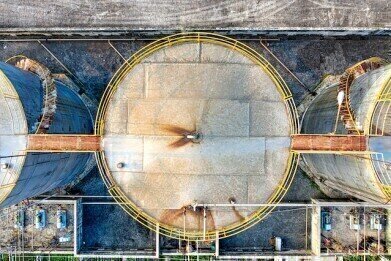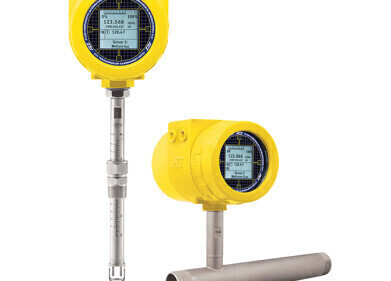Flow Level Pressure
Storage Tanks for Oil & Chemicals - Everything You Need to Know
Dec 07 2022
A one-size-fits-all approach doesn’t cut it when it comes to storing oil and chemicals. Specialised solutions are needed to maintain the integrity of these unique materials, as well as meet strict health and safety regulations enforced in the industry.
Want to know more about storage for products like oil, gas, petrochemicals and other industrial materials? Read on as we take a closer look at the different storage tanks solutions and their applications.
Storage tanks for industrial fuels
Also known as petroleum tanks, industrial fuel storage tanks are designed to store organic and non-organic liquids. They can also hold vapour and flammable fluids. Onsite tanks are extremely useful for sites that use large amounts of fuel. Easy access to oil fast-tracks refuelling processes and reduces costs associated with administration, ordering and delivery. Onsite tanks also allow sites to buy in bulk, which can significantly reduce the cost of industrial fuel.
In a recent press release, the Defence Infrastructure Organisation (DIO) announced major upgrades to the Oil Fuel Depot at Gosport. The project cost an estimated £83 million and will play an important role in meeting the future demands of the Royal Navy. This includes fuelling state-of-the-art Queen Elizabeth Class carriers, as well as aircraft and helicopters operated by the Royal Navy.
British construction and engineering company J. Murphy and Sons Ltd was enlisted to design and replace existing fuel storage tanks, as well as upgrade pipes, fuel delivery systems, fuel sampling lab equipment and other infrastructure.
“We are delighted to have completed this project to meet the Royal Navy’s fuel requirements,” says Stephen Bunce, Principal Project Manager at the DIO. “The upgrade work on the Gosport site was delivered on time and within budget and its success was achieved through good teamwork, communication and collaboration. It’s great to see this vitally important facility now in full operation.”
There are two main types of industrial fuel storage tanks:
-
Aboveground storage tanks
Aboveground storage tanks (ASTs) are an easy and cost-effective solution. The upfront costs are lower as there’s no need for installation groundwork like deep excavation and underground piping. ASTs are also easier and cheaper to maintain than their underground counterparts. Leaks can be easily detected, making ASTs ideal for storing fuels, chemicals and other industrial products.
Many sites choose to invest in self bunded tanks, a type of AST. Tough and durable, self bunded tanks feature double steel walls to prevent leaks and spills. They’re essentially a tank within a tank and help sites reduce the risk of product loss and environmental contamination. The gap between the inner and outer wall is roughly 110% of the total capacity. This ensures even large spills don’t seep out of the tank.
-
Underground Storage Tanks
Underground storage tanks (USTs) are preferred for hazardous fuels and materials. Generally, at least 10% of the tank’s volume is underground. Underground tanks used to store dangerous materials are usually regulated. For example, in the US they must be registered with the Environmental Protection Agency (EPA). While the chance of fire and explosion are lower with USTs, the risk of leaks is higher.
Advantages of industrial fuel storage tanks
Fuel storage tanks offer a laundry list of advantages. The manufacturing process is specialised and regulated, which offers sites peace of mind when storing oil, petrol, diesel, chemicals and hazardous liquids. Storing these types of products in tanks minimises evaporations and emissions. This helps reduce volume loss and maximise profit margins.
Fuel storage tanks are manufactured using specialised materials designed to resist deterioration when exposed to corrosive elements. This prevents leaks and helps sites protect their assets, as well as meet their environmental obligations.
Issues associated with fuel storage tanks
External temperature fluctuations are a common issue associated with fuel storage tanks. Changes in temperature can cause tanks to “breathe” and create condensation. This creates a build-up of water which supports bacterial growth. For example, in 2018 the UK experienced a bitterly cold winter followed by an unseasonably warm summer. This resulted in a 23% increase in reports of fuel tank corrosion and contamination.
Fatty Acid Methyl Ester (FAME) content in fuels is also a major issue. Many modern fuels contain higher levels of FAME, a type of biodiesel with similar properties to conventional diesel. While FAME can help improve the environmental credentials of fuel, it can also create contamination issues. Microbes in FAME sink to the bottom of the tank, where they combine with dirt, rust and other debris to form a sludge. This can corrode the structure of the storage tank over time and increase the risk of leaks and failure.
Storage tanks for industrial chemicals
Industrial chemical storage tanks are used to store corrosive, flammable and hazardous materials. They’re used to blend and process chemicals, as well as store and transport raw materials and finished products. The three main types of industrial storage tanks available are:
-
Stainless steel storage tanks
Tough and durable, stainless steel storage tanks are a solid solution for most applications. They’re generally the most expensive option and are highly versatile. When manufactured correctly, stainless steel tanks easily comply with strict industry regulations. They also have a longer lifespan than most tank solutions, making them a good long-term investment. That said, they’re unsuitable for storing many types of acids.
-
Polyethylene (PE) storage tanks
When it comes to versatility, PE storage tanks are a best-in-class solution. The polyethylene can be linear or cross-linked, depending on structural strength requirements. PR tanks are factory-made in moulds, which minimises the risk of human error during the manufacturing process.
-
Fiberglass (FRP) storage tanks
Affordability is one of the chief advantages of FRP storage tanks. However, they are prone to leaks which makes them unsuitable for certain chemicals. They’re also susceptible to corrosion from chemicals like hydrofluorosilicic acid, which can degrade the structural integrity of fiberglass.
Choosing the right industrial chemical tank
The type of tank used depends on the nature of the materials being stored. Failing to assess the unique properties of the material being stored is one of the biggest mistakes a site can make. Just because a tank can hold water, it doesn’t mean it’s suitable for storing oil, chemicals and other hazardous materials. Tanks must be selected based on their application, as well as the unique environmental, safety and legal requirements enforced within the industry.
Preventing environmental contamination
Preventing environmental contamination should be front of mind when choosing storage tanks for industrial chemicals. Tank failures can have serious environmental consequences, especially when leaks are largescale. As soon as hazardous materials seep out of tanks they pose a risk to streams, lakes and groundwater reservoirs, as well as drinking watcher catchments. Spills can also permanently contaminate soil and pose a serious threat to human health.
Minimising the risk of failure
As explored above, storage tank failure is threat to environmental and human health. Failure is usually caused by the following:
- Deterioration of manufacturing materials. Either due to quality issues or because the materials used are unsuitable for storing corrosive chemicals
- Construction issues and flaws during the manufacturing process
- Failure to properly maintain the tank and schedule repairs
- Overfilling the tank
- Failure to implement spill containment strategies
Storage tanks for oil
Oil storage tanks are used to store crude oil and other raw materials during the different refining and processing stages. They’re also used to store finished products. Materials used to manufacture oil storage tanks include stainless steel, carbon steel, reinforced concrete and industrial plastic. Some oil storage tanks are also carved into impermeable, subterranean rock deposits. Below, we take a closer look at the different types of oil storage tanks available.
-
Floating roof tanks
These tanks feature a roof that rises and falls, depending on how much oil is being stored. The floating roof is a clever safety feature designed to prevent vapour from building up in the tank.
-
Fixed roof tanks
Fixed roof tanks are used to store lower volumes as oil.
-
Bunded tanks
Bunded tanks are double walled and feature a built-in catch system to prevent spills and leaks.
-
Single and double skin tanks
While some tanks feature a single layer of material, others feature a double skin to reduce permeability.
Safety first!
Improving onsite safety is one of the key goals of storage tanks for oil and chemicals. Safety is especially important at offshore rigs, which face a unique set of risks and dangers. As a result, they’re governed by a strict set of local and international health and safety standards. This includes strict rules for gas and flame detectors, as well as automatic sprinkler systems designed to pump in seawater and extinguish flames.
As seen in disasters like Deepwater Horizon, the risk of explosion in offshore rigs is very real. Accidents can cause catastrophic damage to equipment and have serious environmental consequences. Not to mention lead to serious injuries and loss of life. To manage the risks, offshore operators are continually on the search for new ways to improve the efficiency and reliability of automatic fire sprinkler systems. Find out more about the latest solutions in ‘Offshore Platform Fire Safety Sprinkler System Depends on Liquid Flow Assurance Switch’.
Digital Edition
PIN 25.3 June/July
June 2024
Analytical Instrumentation - Recent Advances In Various Bench Scale Accelerated Oxidative Testing Methods For Fuels - Petrochemical Industry: Anton Paar Solutions Streamline Processes, Reduce H...
View all digital editions
Events
Jul 30 2024 Jakarta, Indonesia
Jul 30 2024 Jakarta, Indonesia
China Energy Summit & Exhibition
Jul 31 2024 Beijing, China
Jul 31 2024 Chengdu, China
Aug 05 2024 Moon Township, PA, USA


















